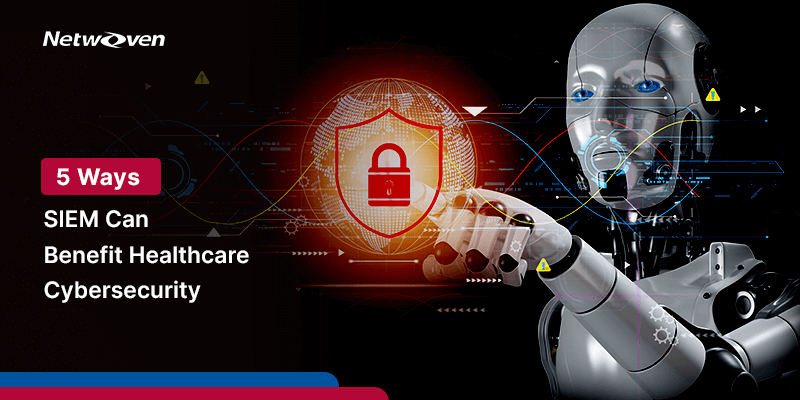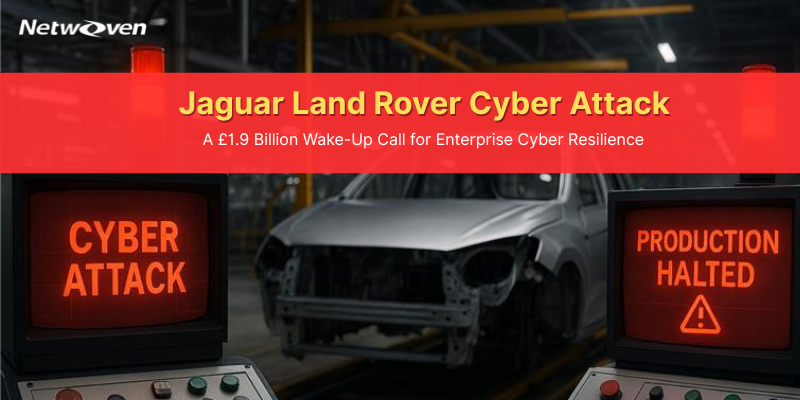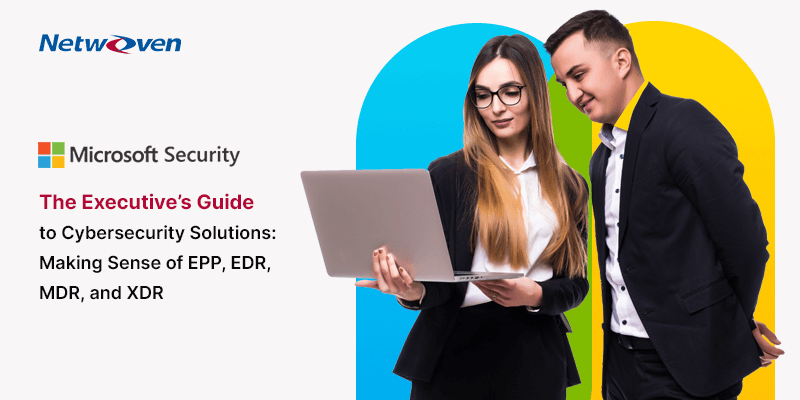Introduction
The amount of confidential information in the healthcare industry makes them the right candidate for embracing new technologies. Electronic Health Record (EHR), a crucial system that stores vital patient information, is at the heart of it. Moreover, hospitals depend on various applications to boost business outcomes, financial performance, and safety scores.
This speaks for itself the importance of cybersecurity in healthcare. As reported by TechCrunch, the severe cyberattack on the US healthcare giant Change Healthcare in February 2024, resulted in shutting down their entire network. The patients’ medical records in many hospitals went on hold for many weeks. Millions of patients are still rampaging about their data being exposed and not knowing what lies ahead.
In the wake of this incident, the entire healthcare system shook up. This sets the right stage for the adoption of SIEM as a critical cybersecurity strategy. With cutting-edge technologies like cloud computing and next-gen databases, the healthcare providers are working hard to protect vital health information.
Top Healthcare Cybersecurity Concern
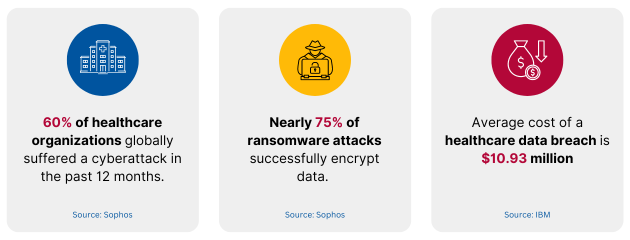
What is SIEM?
SIEM stands for Security Information and Event Management. When built on a strong security foundation SIEM can help security professionals get a more holistic view of the various entities trying to gain access to their network. It operates by combining two of the most important functions: Information Management and Event Management.
Information Management collects and analyzes the data from various sources while Event Management tries to find the correlation and monitors the events in real time.
How does SIEM improve healthcare security?
Let us look at how SIEM is used to detect and manage security incidents in a healthcare organization. Here are the 5 ways SIEM can revolutionize healthcare security.
1. SIEM log management
When evaluating SIEM systems, look for features like automated data analysis, near real-time alerts, actionable insights, and easy, quick setup with minimal training. These capabilities are essential as cyberattacks become more sophisticated.
These are what SIEM does in a sound IT infrastructure:
- Data Collection: Gathers event data from across the IT infrastructure, including on-premises and cloud environments.
- Log Sources: Pulls in data from users, devices, applications, data sources, cloud services, networks, firewalls, and antivirus software.
- Real-time Analysis: Correlates and analyzes this data in real-time to detect unusual activity.
- Threat Intelligence Integration: Some SIEM systems integrate with third-party threat intelligence feeds.
- Enhanced Security: Compares internal data with known threat signatures to quickly detect and block new attack types.
2. Finding event correlation and applying advanced analytics
With advanced analytics, SIEM detects intricate data patterns that reveal uncanny connections between events. This not only helps to flag the incident but also helps in prompt response. It really boosts the efficiency of the IT security teams to optimize their time by shortening mean time to detect (MTTD) and mean time to respond (MTTR). SIEM does all the heavy lifting of analyzing security events, freeing up IT teams for manual and time-consuming tasks.
3. Incident monitoring and alert notifications
Now you have all the activities, incidents, and data pulled in from all sources in a central dashboard. Here the security team gets a bird’s eye view of all the actions and threat identification to kick-start response and remediation. These dashboards often feature real-time data visualizations which help analysts quickly spot any spikes, dips, or trends in any suspicious activity. The security admins get immediate alerts with the predefined customizable rules set in place. They can then promptly stop the threat before things go haywire.
4. Effective compliance oversight and reporting
SIEM solutions are a go-to for healthcare organizations dealing with various regulatory compliance needs. Thanks to their data collection and analysis mechanism, SIEM is a valuable tool for gathering and verifying compliance data across the entire business infrastructure.
Not only these but you can also generate real-time compliance reports for standards like PCI – DSS, GDPR, HIPAA, and SOX. This lightens the burden of security management and flagging potential violations early on. They also come with pre-build add-ons that automate report generation to meet compliance requirements.
5. What are some of the key benefits of SIEM for the Healthcare industry?
Here’s a quick rundown of the benefits SIEM brings to IT security teams:
- Proactive Risk Mitigation:
- Essential for healthcare organizations of all sizes.
- SIEM solutions streamline security workflows and offer real-time threat recognition.
- Automated Compliance:
- Centralized auditing and reporting across the entire business infrastructure.
- Advanced automation reduces internal resource usage while meeting compliance standards.
- AI-Driven Automation:
- Integration with SOAR systems saves time and resources.
- Deep machine learning handles complex threat identification and incident response efficiently.
- Improved Organizational Efficiency:
- Enhanced visibility of IT environments.
- Central dashboard for unified system data, alerts, and notifications.
- Facilitates efficient interdepartmental collaboration.
- Advanced Threat Detection:
- Reliance on SIEM for detecting known and unknown threats.
- Incorporation of threat intelligence feeds and AI technology.
- Effective response to cyberattacks such as insider threats, phishing, ransomware, DDoS attacks, and data exfiltration.
- Forensic Investigations:
- Centralized log data collection and analysis.
- Ability to re-create past incidents or investigate new ones.
- Improved security processes through thorough analysis.
- Compliance Management:
- Real-time audits and on-demand reporting.
- Reduces resource expenditures for compliance auditing and reporting.
- User and Application Monitoring:
- Tracks all network activity across users, devices, and applications.
- Improves transparency and detects threats across the entire infrastructure.
- Vital for BYOD policies, remote workforces, and SaaS applications.
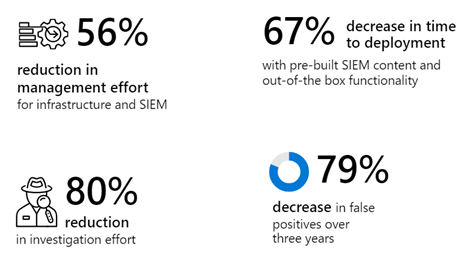
Conclusion
Healthcare organizations must go back to the basics. To effectively leverage SIEM insights, develop response playbooks and automated workflows. Strong governance is essential before SIEM implementation, including robust identity and access management, configuration management, and supply chain management policies. Without these fundamentals, a SIEM system can’t provide a comprehensive view of network activity or accurately identify attack patterns. Finally, the purpose of the SIEM solution is to help a healthcare organization bounce back quickly from a security incident.
Reference:
- Microsoft, “Microsoft Digital Defense Report,” 2022.
- IBM “Cost of a Data Breach,” 2022.
- Sophos, “The State of Ransomware 2021,” April 2021.
- A commissioned study conducted by Forrester Consulting, “The Total Economic Impact of Microsoft Azure Sentinel,” November 2020.

